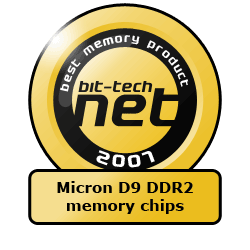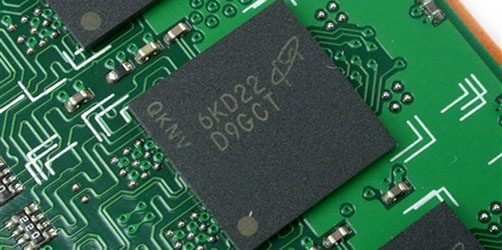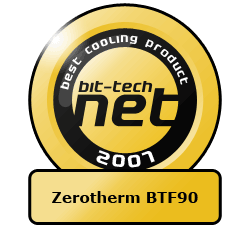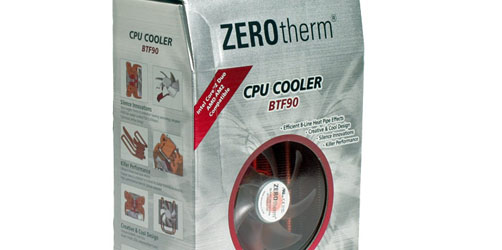The bit-tech Hardware Awards 2007
December 19, 2007 | 08:58

Best Memory Product: Micron D9 DRAM chips
Notable Mentions: Kingston HyperX KHX9600D2K2/2G, OCZ DDR2 PC2-6400 SLI-Ready EditionNo matter what brand you buy, whether you love the Corsair DHX technology or you pine over the OCZ Reaper-X, the chances are that any performance memory you bought in the last twelve months will have featured Micron's D9 memory chips, whether your choice of memory was DDR2 or DDR3.
In that respect, it didn’t even matter which memory manufacturer the modules came from, whether it be Corsair, OCZ, Kingston or whoever your favourite memory supplier is because it was Micron that did the hard work in making a memory chip so capable in the first place.
The same was true with DDR3 as well – if you want anything that does over 1,600MHz you will be buying Micron D9 ICs.


While we found the Corsair PC10000 Dominator modules to be incredibly fast, they were so expensive that they were out of the reach of just about everyone but the most extreme enthusiasts with the deepest pockets.
In comparison, Kingston's HyperX PC9600 2GB kit managed to undercut everyone else on price, and while the modules didn’t have the fancy heatsinks that the competition's modules donned, they came within a whisker of the performance for a fraction of the price. Now you can pick up 2GB of some of the fastest memory available for just £85 (inc. VAT)! And I bet you can guess what chips the modules used... yes, another notch for Micron's D9s.
The OCZ DDR2 PC2-6400 SLI-Ready Edition kit also comes highly recommended because they were one of the first very inexpensive but very capable DDR2-800 memory kits. The kit also included an Enhanced Performance Profile enabling better performance on boards that enabled Nvidia's EPP memory standard. At the time we reviewed the modules, a 2GB kit was just over £80 (inc. VAT), but since then DDR2 memory prices have bottomed out, with the same 2GB pair now only costing £50 (inc. VAT)!
Best Cooling Product: ZeroTherm BTF90
Notable Mentions: Noctua NH-U12F, Thermaltake V1, Thermaltake MaxOrbZeroTherm is not a name most people would first thing of, but the BTF90 surprised us all by reminding us that a cooler didn’t need a 120mm fan to offer awesome performance. As the name suggests the BTF90 uses a very quiet but capable 92mm fan and goes against the usual “heatpipe tower cooler” design by using enclosing copper fins instead of aluminium. The smaller design means it fits more cases and more motherboards with enclosed CPU areas, compared to the competition.


Thermaltake also provided us with some awesome cooling again too – the MaxOrb takes the classic orb design, removes the irritating noise and questionable build quality that used to plague Thermaltake cooling products, and instead takes the performance to the extreme. It also makes up for less than stellar cooling in other areas as it also cools the northbridge and surrounding heatpipes - all at reasonable price.
Since reviewing it however, we’ve found it to be incompatible we quite a few boards that have enclosed CPU sockets and have ended up using the V1 more for board testing in the lab instead. However, the V1 offers a slightly lower performance and a higher price because it uses more expensive copper, instead of aluminium.
If you were after a truly silent cooler however there was really only one stop: Noctua. What differentiates Noctua is that it includes truly silent fans to accompany its coolers, instead of rebranding a something-or-other blue LED fan because "blue LEDs are cool". Noctua does well to avoid this marketing hype, opting to actually put in some design time to make something useful instead.
While the NH-U12F design has been superseded by the NH-U12P more recently, to make it tall enough to fit over even the largest heatsinks surrounding the CPU socket, it still hasn’t won because its mounting mechanism is still really awkward to use.

MSI MPG Velox 100R Chassis Review
October 14 2021 | 15:04








Want to comment? Please log in.